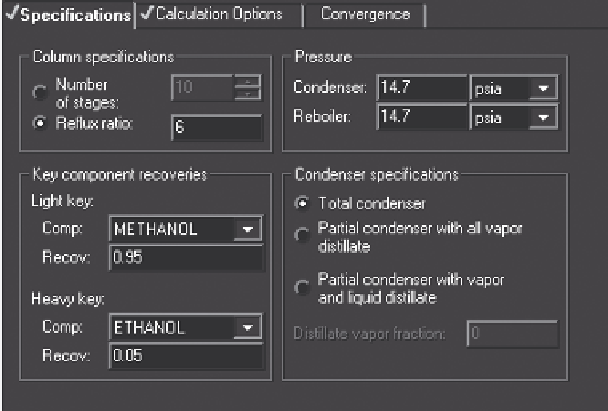Information Technology Reference
In-Depth Information
applies where
d
i
,b
i
,d
r
,and
b
r
are the distillate and bottoms componential flows of
components
i
and
r
,and
α
i,r
is their relative volatility, and when equation (11.13) is
combined with the overall componential material balance equation,
f
i
=
d
i
+
b
i
(11.14)
where
f
is the feed of component
i
, the equations
f
i
1
+
(d
r
/b
r
)
α
i,r
b
i
=
(11.15a)
f
i
(d
r
/b
r
)
α
i,r
1
+
(d
r
/b
r
)
α
i,r
d
i
=
(11.15b)
are obtained.
An example of the use of DSTWU is provided at Chapter Eleven Examples/DSTWU
Example. The model's primary input is shown in Figure 11.11. Selection of the Cal-
culation Options tab enables a user to specify a table of reflux versus the number of
theoretical stages.
11.4.2 Distl
The Distl model is applicable to both binary and multicomponent systems and makes
use of the equal molal overflow and constant relative volatility approximations. The
model employs Edmister's method and rates single-feed, two-product columns. Details
may be found in Seader and Henley (1998).
The primary input form is shown in Figure 11.12. The DSTWU example was used
as input to the Distl model. Results are given at Examples/DistlExample.
Figure 11.11
DSTWU primary input.













